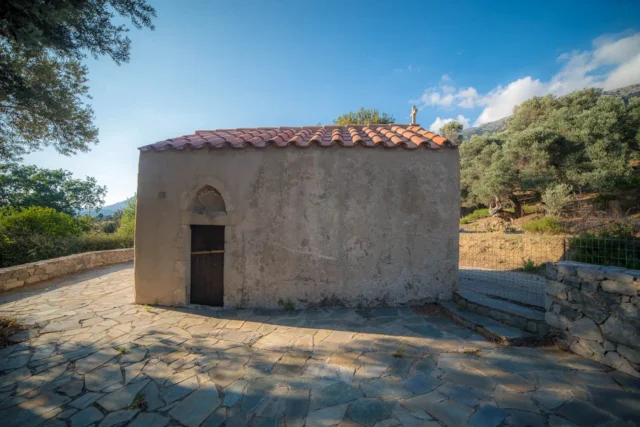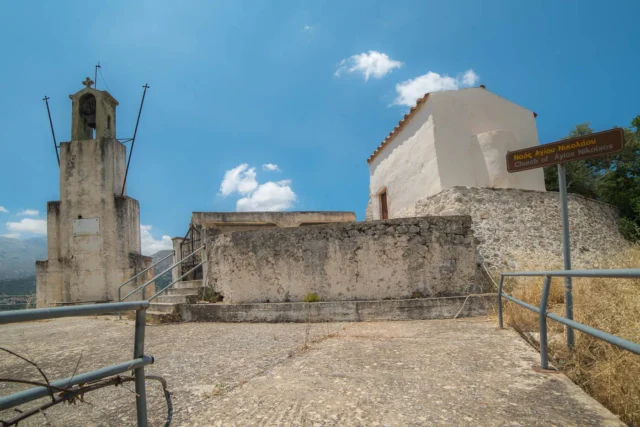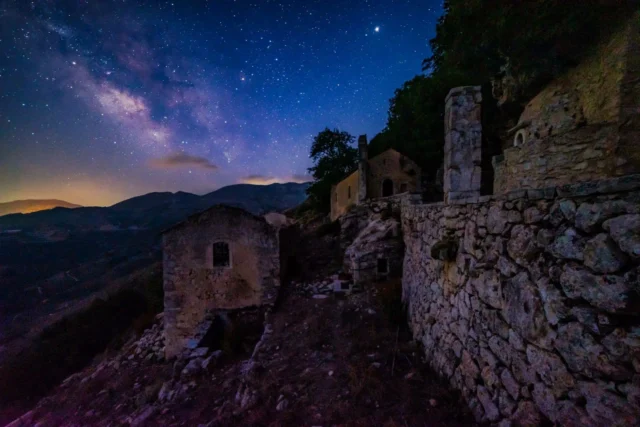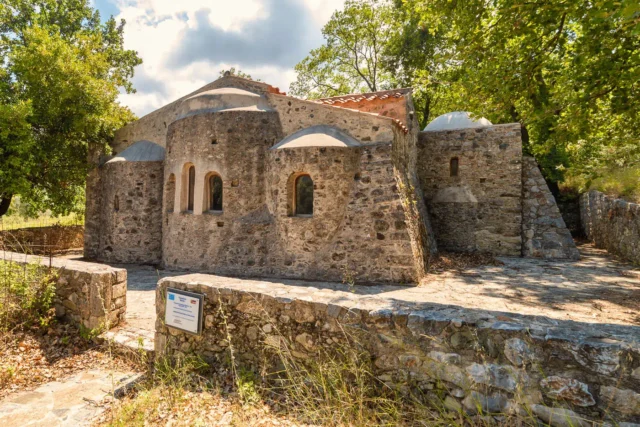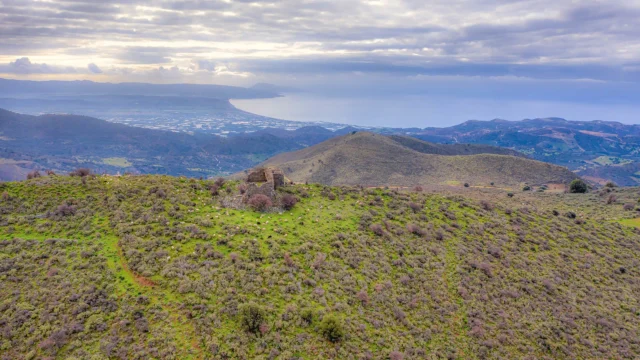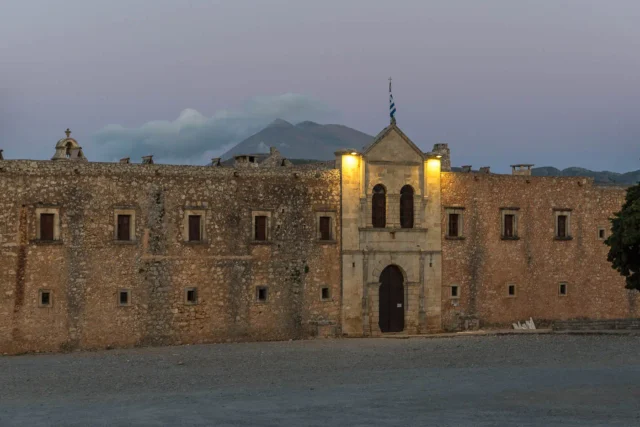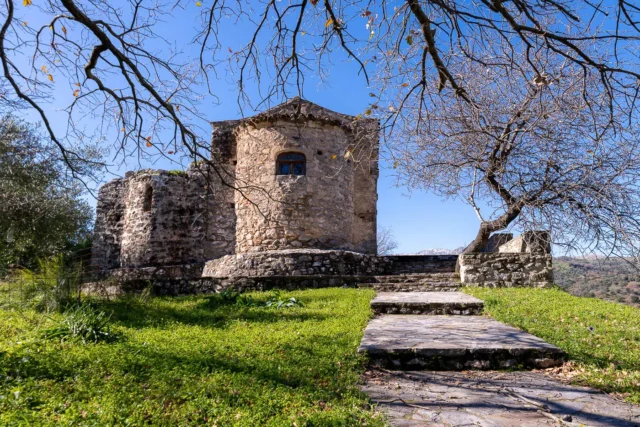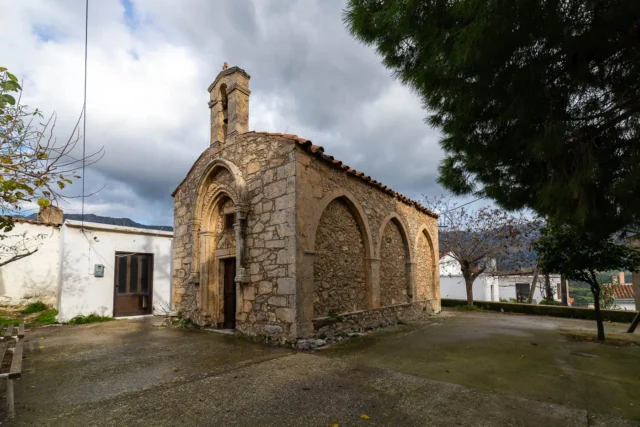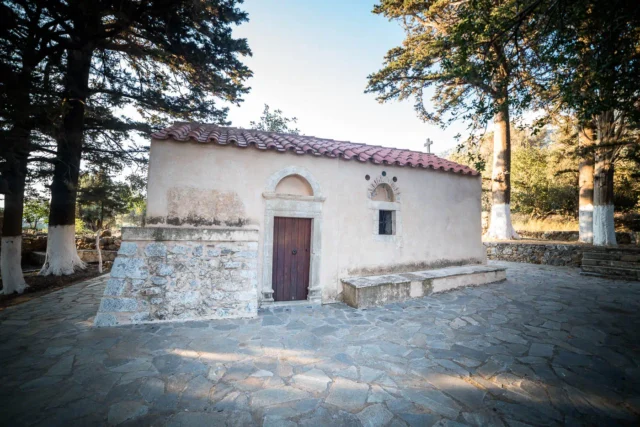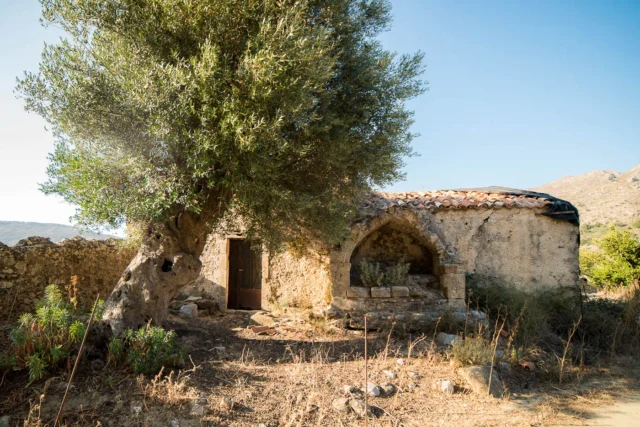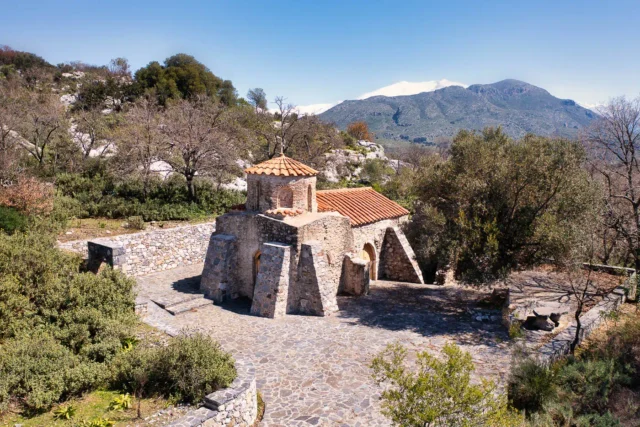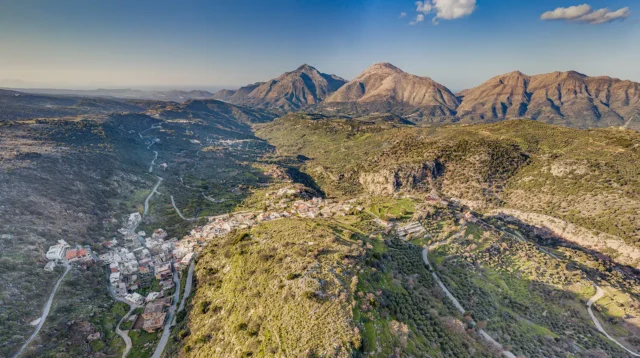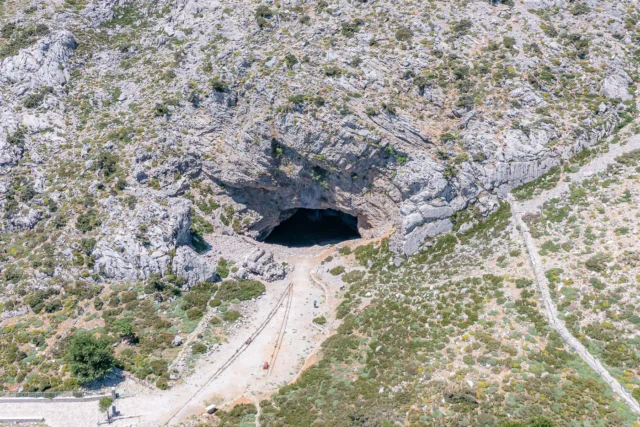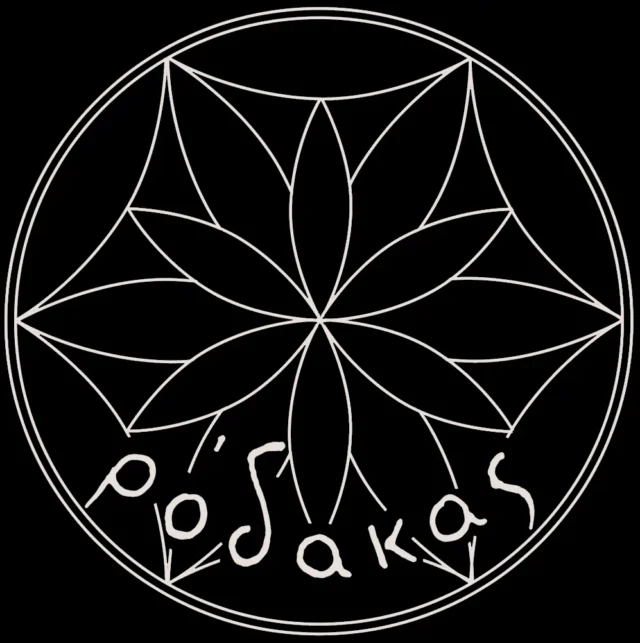227
listings found
Categories
Active filters:
Agios Antonios in Veni hill
Agios Antonios cave sanctuary, situated on Veni Hill in Amari, Rethymno, Crete, reveals a blend of Minoan, Byzantine, Venetian, and Ottoman history. Originally a Minoan worship site, it evolved into a Byzantine monastery dedicated to Agios Antonios. It served as a refuge for Cretan rebels, earning the name "Pnyka of Crete," and faced Ottoman attacks. The site is linked to Arkadi Monastery and features a holy spring, monastic cells, and remnants of past monks. Currently under restoration, the cave holds ancient clay basins and celebrates Agios Antonios' feast day. The location offers views of the Psiloritis range, reflecting Crete's spiritual and resistance heritage.
Panagia Kera
Panagia Kera, near Nefs Amari, is a 15th-century three-aisled basilica, constructed over a 13th-century cross-in-square church, potentially an earlier Apollo temple site. This Byzantine masterpiece features frescoes, including the Dormition of the Virgin and Ascension, and the Kallergis family coat of arms, linking it to the Venetian period. Once a monastery katholikon under Moni Asomaton, it stands amidst ancient olive groves, with remnants of its past visible in the sanctuary and surrounding area, reflecting Crete's rich historical layers and cultural influences.
Koules in Vathiako
Explore the Koules in Vathiako, a ruined Ottoman fortress in Crete, and learn about its role in controlling the island and protecting the Muslim village
Arkadi monastery
Located on a fertile plateau, this monastery is a symbol of Cretan resilience with a 16th-century structure blending Renaissance and Baroque styles. It became a refuge during the 1866 Cretan Revolt against Ottoman rule, where defenders, led by Abbot Gabriel Marinakis, detonated gunpowder in a heroic act of self-sacrifice. The event is commemorated on November 8th. The complex includes a museum and is linked to the Agios Antonios church on Veni hill. Other feast days are May 21st and August 6th.
Cretan Herbs
Our company, since1998 and based in the village of Zoniana deals with traditional-organic herbs of Crete, as well as health and beauty products. D&M Demokrates Kavvalos Company TELEPHONE 2834061179 – […]
Agia Anna
Agia Anna, near Nefs Amari, Crete, features 12th-century origins and 14th-century renovations. It houses 1225 Byzantine frescoes, including the Deesis and Cretan saints like Apostle Titus. The church's 1196 inscription marks its early phase, reflecting Byzantine art evolution in Crete. The frescoes, though aged, retain vibrancy, showcasing artistic and spiritual heritage. Located in the Amari Valley, the site offers insights into Crete's historical and cultural context, despite occasional access restrictions.
Panagia in Livada
Located in Livada, near Fourfouras in Amari, this is a small, single-aisled, barrel-vaulted church from the 14th century. It features well-preserved frescoes from that period, financed by Nicholas Arkoleo, depicting the Virgin Mary as Blachernitissa, scenes from Christ's life, and military saints. The structure, originally built with rubble masonry, was expanded westward in the early 19th century. After restoration in 2006, the building and its Byzantine iconography are in good condition.
Kaloeidena monastery
The Afentis Christos Church, a Byzantine structure overlooking Ano Meros, is a focal point for local faith, highlighted by annual August 6th feasts with communal meals and traditional celebrations. Kaloeidena Monastery, now largely in ruins, needs preservation, despite its historical and spiritual value. Both sites reflect Amari Valley's enduring traditions, with efforts aimed to revitalize Kaloeidena, ensuring its role as a cultural and religious landmark. The church stands as a testament to the local community's deep-rooted faith, while the monastery's restoration aims to preserve Crete’s heritage.
Panagia in Smilés
Explore the remnants of the Church of Panagia in the deserted village of Smilés, Crete. Discover its 14th-century frescoes and learn about its historical significance
Ancient Axos (Oaxos)
Oaxos, also known as Axos, was an ancient Cretan city in the Mylopotamos region, inhabited from the Neolithic to the Venetian period. It was known for its strategic location, association with the Idaean Cave, and connections with cities like Knossos and Eleutherna.
Archaeological findings reveal remnants from various periods, including cyclopean walls, terracotta idols, and bronze molds. Oaxos participated in interstate contracts and had its own coinage, featuring Apollo, Artemis, and Zeus, reflecting religious beliefs. The city was a member of the Cretan "Koinon."
Oaxos was eventually destroyed by the Venetians. Today, only a few ruins remain, with some artifacts housed in the Heraklion Archaeological Museum.
Ancient Olive Tree in Goulediana
The Goulediana olive tree, a mastoeidis variety, dates to approximately 1750 years old, evidenced by its growth rings. This 12-meter tall tree with a 17.5-meter circumference reflects the deep-rooted tradition of olive cultivation in Crete, near the Onithe archaeological site. The tree symbolizes peace, prosperity, and longevity, central to Cretan culture and economy. Olive oil is a staple in the Cretan diet, and the olive harvest is a significant annual event, highlighting the tree's cultural significance and historical importance. The gnarled trunk shows centuries of growth, connecting to the area's ancient economic activities.
Ideon Antro cave
Ideon Antron Cave, also known as "Spiliara" or "Cave of the Shepherdess," is located high on the slopes of Mount Ida on the Nida Plateau, Crete, 20 km from Anogia village at 1498 meters above sea level. In Greek mythology, this is where Rhea hid Zeus from Cronus. Archaeological excavations have revealed a rich history of human activity, dating back to the Neolithic period. The cave was used for worship for centuries, with peak activity during the Geometric and Archaic periods. It's open to the public from July to November, except on Tuesdays.
Early Christian Basilika at Onithe
A significant Early Byzantine structure in Rethymno, Crete, dating to the late 5th and early 6th centuries AD. This three-aisled basilica, measuring approximately 36 x 17 meters, was built on a slope with stepped aisles separated by colonnades. Architectural features include a portico, narthex, a potential atrium, and an eastern semicircular apse with a synthronon. Flanking the sanctuary were pastophoria, likely a Prothesis and Diakonikon. Mosaic floors decorated the central aisle, sanctuary, and narthex.
Rodakas
Rodakas is a community social group in Margarites, Rethymno, Crete, founded in 2017. Its mission is to preserve and celebrate the village's cultural heritage by creating a living archive of oral histories and photographs from local elders. The group organizes workshops on traditional Cretan crafts such as stone masonry, focusing on dry stone wall construction, as well as weaving on traditional looms. By documenting personal narratives and ensuring craft skills continue, Rodakas aims to safeguard the community's collective memory for future generations.
Agios Pavlos sand dunes
Also known as Alatsogremnos, is a long sandy beach with towering sand dunes, perfect for swimming, snorkeling, and enjoying stunning sunsets.









